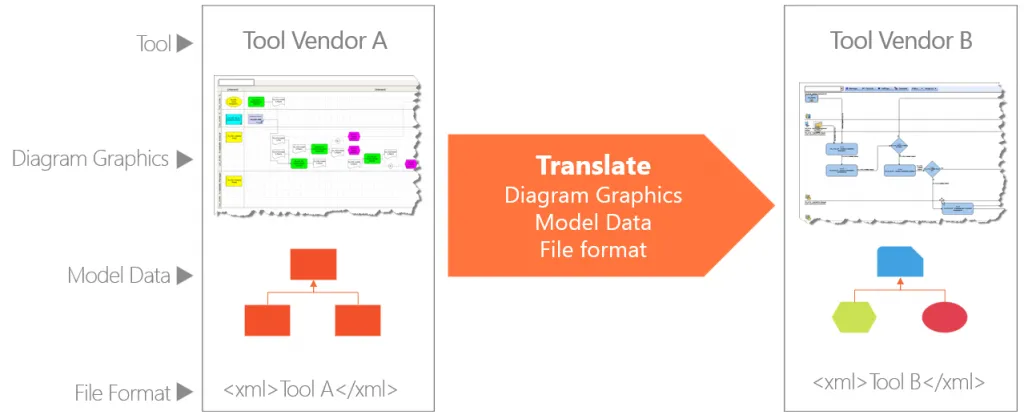Escape from vendor lock-in – translate your model assets the way you decide
Blog: BPM-Xchange team blog
Winning a client on the technical marketplace is sometimes a demanding piece of work. Marketing and sales efforts, pre-sales engagements for POCs and pilots are making a client pretty “costly”. And who likes to lose something costly acquired and embosomed by all the efforts spent to win a deal?
A trend we can see is retaining customers by locking-in their data into the vendor tool. There are new upcoming standards like the BPMN™ model interchange format. But sometimes it is neither implemented completely (e.g. missing diagram graphics) nor fully standard-compliant (as the standards permits vendor interpretations). Or as the name BPMN™ implies, it is limited to business process modeling and notation – but Enterprise or Business Architecture modeling languages or frameworks are much richer in terms of expressivity: simply consider describing an organizational architecture in BPMN™. So just another hype to tear down the walls of vendor lock-in that is more or less restricted to the business process view. Not bad, but not sufficient in practice.
The best option is using the native data format provided by the vendor. This is a loss-free way to save and re-store the data without missing the nitty-gritty details. (Clever vendors know this and are offering native interfaces as high-priced extra license options. Please be aware of this trick: you may get aware of this once you need it, but typically not when you decide for a tool.)
With the BPM-X universal translator tool we are researching and developing a converter that overcomes vendor-specific export and import limitations. This allows customers to use the model and diagram assets they have created with much effort in the way they like: by using native tool data formats or standards such as BPMN™, XPDL or XMI®.
This video shows as an example of how to translate native data from Oracle BPA 10g, 11g or ARIS 6.x, 7.x, 9.x model data and diagrams to native Visio® 2010 VDX and 2013 VSDX data formats.
The translator uses pluggable adapters to connect to all leading tools and import and export their specific data formats or standard formats. This overcomes known limitations and permits to organizations to migrate all data they own from one tool to another, link tools for value adds by re-using existing model assets or build more integrated tool landscapes.
